It’s hard to resist the charms of baby animals, and rhinos are no exception. Rhinoceroses are massive mammals, and their babies are some of the largest baby animals on Earth.
There is much more to these adorable animals, so let’s look at ten interesting baby rhino facts.
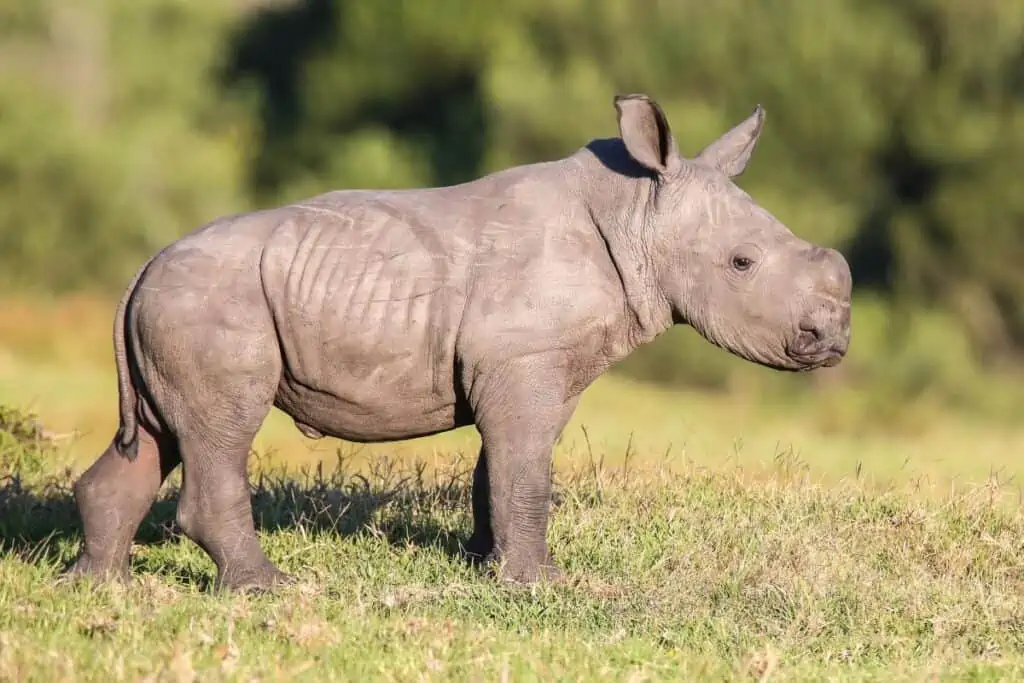
- 1. Rhinos spend over a year in gestation
- 2. Baby rhinos are born hornless
- 3. Twin rhinos are a rare case
- 4. A baby rhino weighs as much as a cement bag
- 5. Baby rhinos don’t mind eating poop
- 6. Rhino calves rush into walking
- 7. A Baby rhino’s best protection is his mom
- 8. Baby rhinos return the favor
- 9. It takes rhinos 2-3 years to leave their moms
- 10. You can adopt a baby rhino
- Final thoughts on baby rhinos
1. Rhinos spend over a year in gestation
While humans carry their babies for only nine months, a rhino mom has to endure pregnancy troubles for more than a year.
Black rhinos have a gestation period of 15-17 months. They might even push that estimate to 18 months if they’re in a care facility. White rhinos also average around 16 months of gestation.
You might think that’s way too long, but the mothers carry this period with such grace that sometimes we can’t even tell that she’s pregnant until there are only a few days left before the due date.
2. Baby rhinos are born hornless
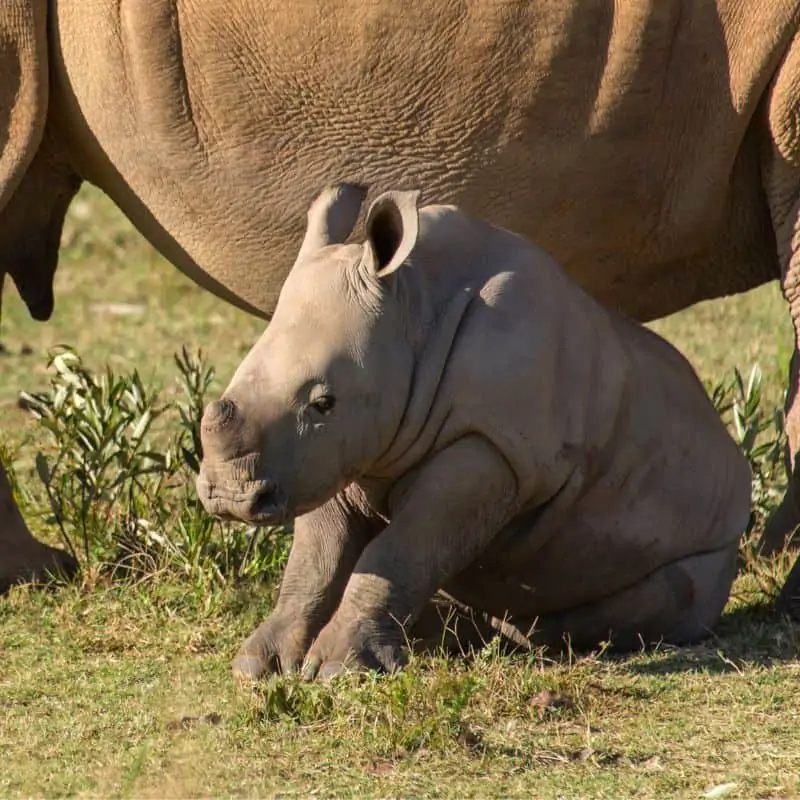
If there’s one iconic thing about rhinoceroses, it’s their horns. After all, it’s in their name, which translates to “nose” and “horn.”
Yet, baby rhinos aren’t born with it.
The horn isn’t a bone but just keratin, like our nails. So, the little calves take a few months before their horns start to show up.
Then, it’ll keep growing as they age.
3. Twin rhinos are a rare case
Like many other large mammals, like hippo mothers, female rhinos give birth to a single baby at a time.
That means it’s rare (but not impossible) for a rhino to have a twin.
Sure, they can have siblings, but each will be from a separate pregnancy and possibly even a different father.
4. A baby rhino weighs as much as a cement bag
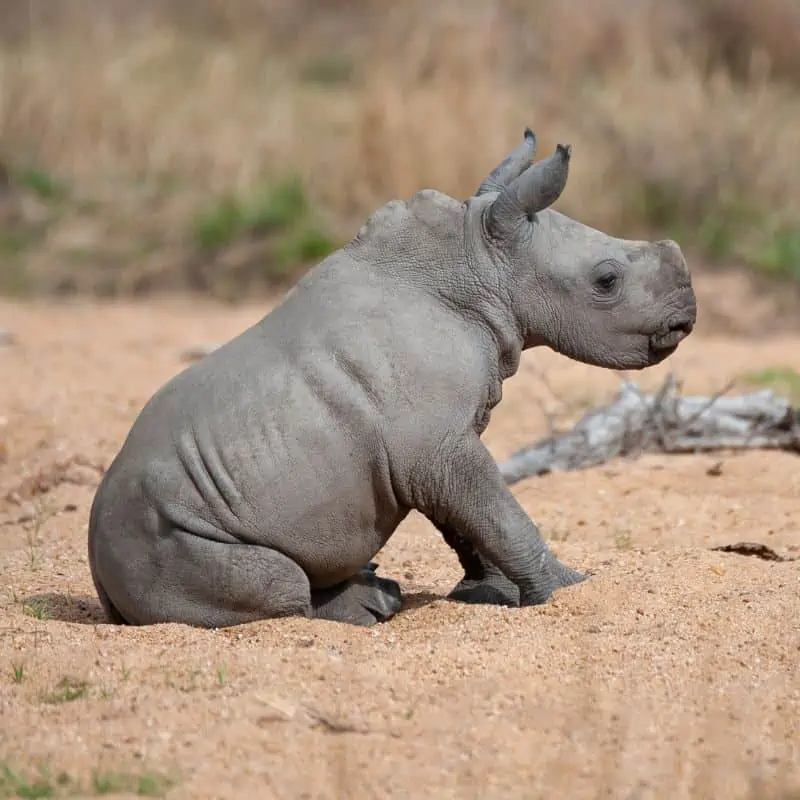
When we think of a “baby,” we often imagine a tiny and cute little guy. While rhino calves are adorable, they’re hardly petite.
A newborn black rhino will average between 59 and 99 lb (27 and 45 kg). Meanwhile, the good-old cement bag is usually around 94 lb (43 kg). So, it’s a close enough match.
White rhino (Ceratotherium simum) adults are typically heavier than their black (Diceros bicornis) counterparts. So, white rhino calves weigh quite a bit more, between 88 and 143 lb (40 and 65 kg).
5. Baby rhinos don’t mind eating poop
That sounds bad but bear with us.
Sure, the claves start nursing only a few hours after birth. They might stay anywhere from a few months to a year before they’re fully weaned. During that time, they try solid food gradually.
However, we all know that there are good bacteria in our guts that help with digestion.
Well, a baby rhino might need to replenish the bacterial population to smoothen the transitioning process into solid food, and eating poop is one way of doing that.
It’s a natural inoculation, and rhinos aren’t the only animals who do it.
While they won’t eat it for long, poop will still be vital for the rhinos as adults since they use it for communication and territorial marking.
6. Rhino calves rush into walking
In most cases, a rhino calf might try to take his very first steps only hours after being born. However, the excited baby might not have a full grasp of the skill just yet and could end up wobbling.
All in all, you can expect the rhino to be up and about within days.
7. A Baby rhino’s best protection is his mom
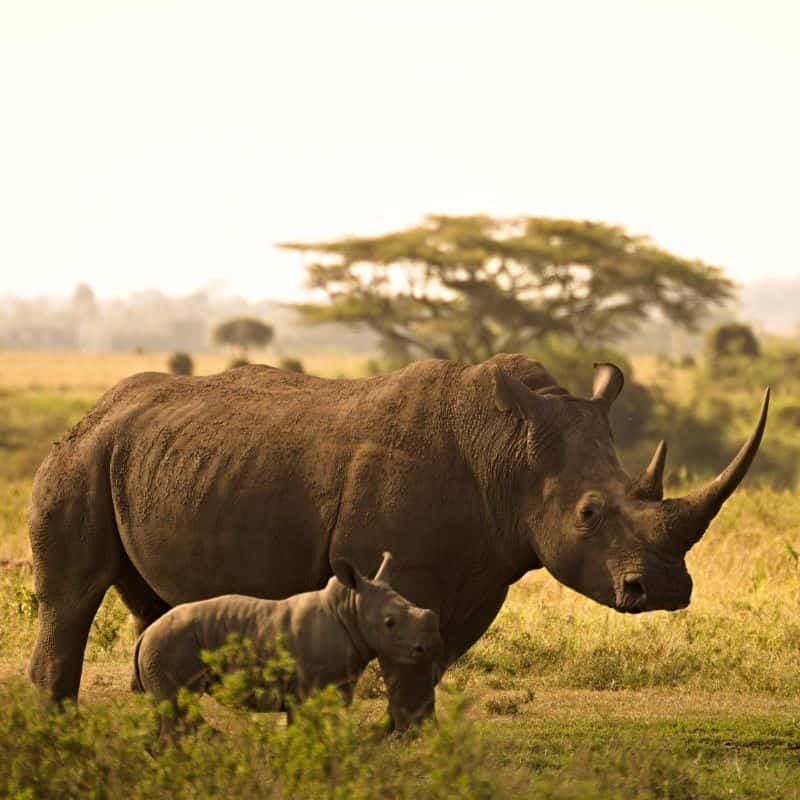
Aside from the poaching threat, adult rhinos don’t have a lot of major predators.
On the other hand, babies could be vulnerable to attacks from lions, crocodiles, hyenas, and even adult male rhinos.
So, for the most part, the calf’s first line of defense will be his mom.
8. Baby rhinos return the favor
While the mom is always on the lookout, trying to protect her calf, it’s not uncommon to see the baby returning the favor.
So, if the rhino mom falls ill, the little guy might step up and try to keep her out of harm’s way.
For instance, one baby rhino was weary of the volunteers helping his sick mother and tried to push them away. Sure, that’s heartwarming, but also a bit funny since he didn’t even have a horn yet!
Baby Rhino Protects Mother and Supervises Her Care
9. It takes rhinos 2-3 years to leave their moms
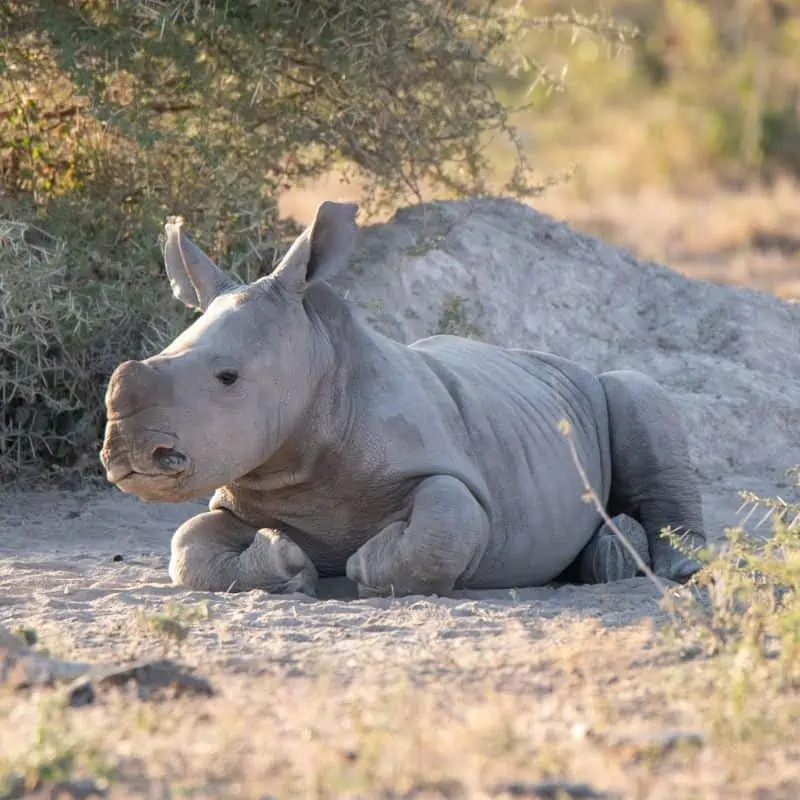
Becoming independent might be challenging, but rhinos are usually ready for this phase at around three years.
So, that mainly works out well since the mother should be ready for a new pregnancy by then.
If a calf doesn’t leave by the time the new baby is born, the mother will reject and push him away to be able to care for the younger sibling. Then, the older rhino will either make it solo in life or find a group to join.
On rare occasions, the mom might reject the calf at a young age, which is devastating since rhinos need a lot of care to survive.
Take, for instance, how zookeepers in Münster had to put in the effort to take care of a poor calf rejected at birth.
10. You can adopt a baby rhino
Adult rhinos are often hunted for their horns, leaving many calves as vulnerable orphans. If you’re willing to help the cause, you can adopt one.
Don’t worry; you won’t have to take him home or anything.
Adopting here only means donating money to help the wildlife organizations that tend to young and abandoned rhinos. This donation will typically cover milk, medication, and protection from poachers.
So, it might even be a good gift for a nature enthusiast.
Final thoughts on baby rhinos
Baby rhinos are adorable, and watching them grow up is a true joy. As they continue to learn about their environment and the world around them, we can only hope that they will be able to thrive and survive despite the many dangers they face.
We wish all the baby rhinos the best of luck in their future, and we look forward to seeing more of them as they grow up.
We hope this article has helped provide some information about baby rhinos and their fascinating lives.
If you are lucky enough to see one in person, take a moment to appreciate these incredible creatures.
